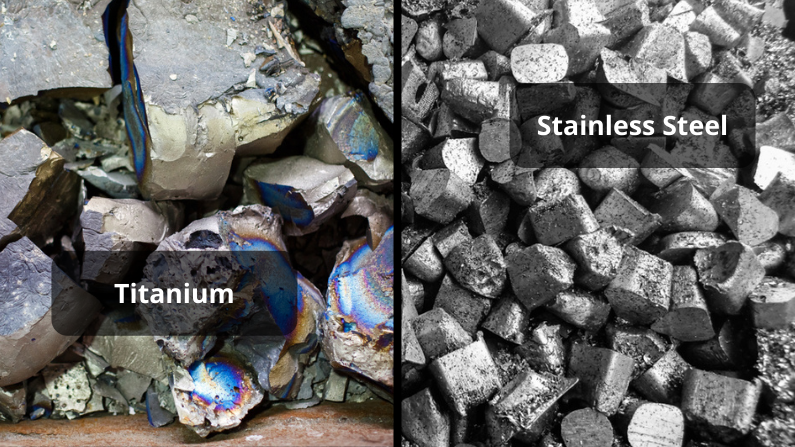When it comes to product design and manufacturing, one of the most crucial decisions an engineer or designer must make is choosing between plastic and metal components. Each material brings its own set of advantages and limitations, and understanding these factors is vital for achieving performance, durability, cost-efficiency, and functionality in an application.
In this blog, we will dive deep into the key differences between plastic and metal components in terms of strength, weight, cost, corrosion resistance, manufacturing process, environmental impact, and more—so by the end, you’ll know which one best fits your engineering project.
Plastic vs. Metal Components
Strength and Durability
Metals like aluminum, stainless steel, and titanium are naturally stronger and more durable than most plastics. They can withstand high impact forces, bear heavy loads, and resist deformation under stress, making them ideal for structural and high-performance applications such as automotive frames, industrial machinery, and aerospace components.
Plastics, though not as strong as metals, still offer sufficient strength for many consumer and industrial applications. Advanced engineering plastics like polycarbonate, PEEK, or nylon have excellent toughness and fatigue resistance and can replace metals in some scenarios. However, they tend to degrade faster under UV exposure, heat, or mechanical stress over time.
Verdict: For high-load or structural applications, metal is the better choice. Plastics can work well for moderate-duty uses.
Weight Considerations
One of plastic’s greatest advantages over metal is its lightweight nature. Plastic components are significantly lighter than their metal counterparts, which is a major plus in industries like automotive, aerospace, and electronics, where weight reduction improves efficiency, performance, and portability.
While lightweight metals such as aluminum help reduce weight to an extent, they still can’t compete with the ultra-light characteristics of many plastics.
Verdict: Plastics win in applications where weight-saving is a priority.
Cost Comparison
Plastic components are generally more cost-effective to produce, especially in large volumes. The injection molding process allows mass production of complex parts with minimal waste and low per-unit cost after tooling is complete. Plastics also require less energy during manufacturing and are easier to transport due to their lighter weight.
Metals, on the other hand, are more expensive to extract, machine, and process. CNC machining, casting, or metal stamping processes involve higher material and energy costs.
Verdict: Plastics are more economical for high-volume production. Metals are costlier but may be justified by strength and durability needs.
Corrosion Resistance
Plastics are naturally resistant to moisture, chemicals, and corrosion. They don’t rust and don’t require coatings or treatments to withstand wet or corrosive environments. This makes plastics ideal for plumbing components, marine applications, and medical devices.
Metals like steel or iron are prone to rust unless coated or alloyed. Stainless steel and anodized aluminum offer corrosion resistance, but plastics still perform better in chemically aggressive or wet environments without additional treatments.
Verdict: Plastics provide better corrosion resistance out of the box.
Manufacturing and Design Flexibility
Plastics offer excellent design flexibility. Injection molding allows for the creation of complex geometries, integrated features (like hinges, clips, or threads), and thin walls—all with minimal secondary machining. Plastic parts can also be colored throughout, eliminating the need for painting.
Metal parts, while strong, are more limited in terms of forming intricate shapes without complex machining or welding. Post-processing like painting, coating, or polishing is often required.
Verdict: Plastics offer superior ease of manufacturing and design versatility.
Heat Resistance
Metals are excellent conductors of heat and can operate in extreme temperatures without losing their structural integrity. Metals like stainless steel can withstand heat over 1000°C, making them suitable for engines, ovens, and high-temperature equipment.
Most plastics have relatively low melting points and begin to deform at temperatures above 100–150°C. High-performance thermoplastics can withstand greater heat but still fall short of metals in terms of thermal endurance.
Verdict: Metals win when heat resistance is critical.
Electrical Properties
Plastics are naturally good electrical insulators and are widely used in electrical and electronic applications for casings, sockets, and insulation.
Metals are conductive, which is useful for making electrical circuits and heat sinks but requires insulation when used in consumer products.
Verdict: Plastics are preferable in insulating and non-conductive applications.
Environmental Impact and Recyclability
Metals are generally more recyclable than plastics. Steel, aluminum, and copper can be recycled repeatedly without significant loss of properties, which makes them a sustainable choice for long-term use.
Plastics, especially thermosets, are more difficult to recycle, and not all types are accepted by recycling facilities. However, bioplastics and recyclable thermoplastics are slowly gaining ground.
Verdict: Metals are more sustainable due to better recyclability.
Comparison Table: Plastic vs. Metal Components
| Property | Plastic | Metal |
|---|---|---|
| Strength & Durability | Moderate, may degrade over time | High, excellent for load-bearing |
| Weight | Lightweight | Heavier |
| Cost | Lower (especially for large quantities) | Higher due to material and machining costs |
| Corrosion Resistance | Excellent, doesn’t rust | Good with protective coatings or alloys |
| Heat Resistance | Limited, may deform under heat | Excellent, withstands high temperatures |
| Design Flexibility | High, allows complex shapes and features | Lower, complex designs need more processing |
| Electrical Conductivity | Insulator | Conductor |
| Recyclability | Limited (depends on type) | High, can be recycled without property loss |
Conclusion
When choosing between plastic and metal components, your decision should depend on your project’s requirements. If you’re aiming for lightweight, low-cost, and corrosion-resistant parts—especially for consumer goods, electronics, or fluid systems—plastics might be the right choice.
However, if your application involves high loads, heat exposure, or requires long-term durability and strength, metals—despite their higher cost—are likely to serve better in the long run.
Ultimately, there’s no universal winner. Evaluate your design goals, environment, and performance expectations to choose the material that will offer the best functionality, longevity, and value.



